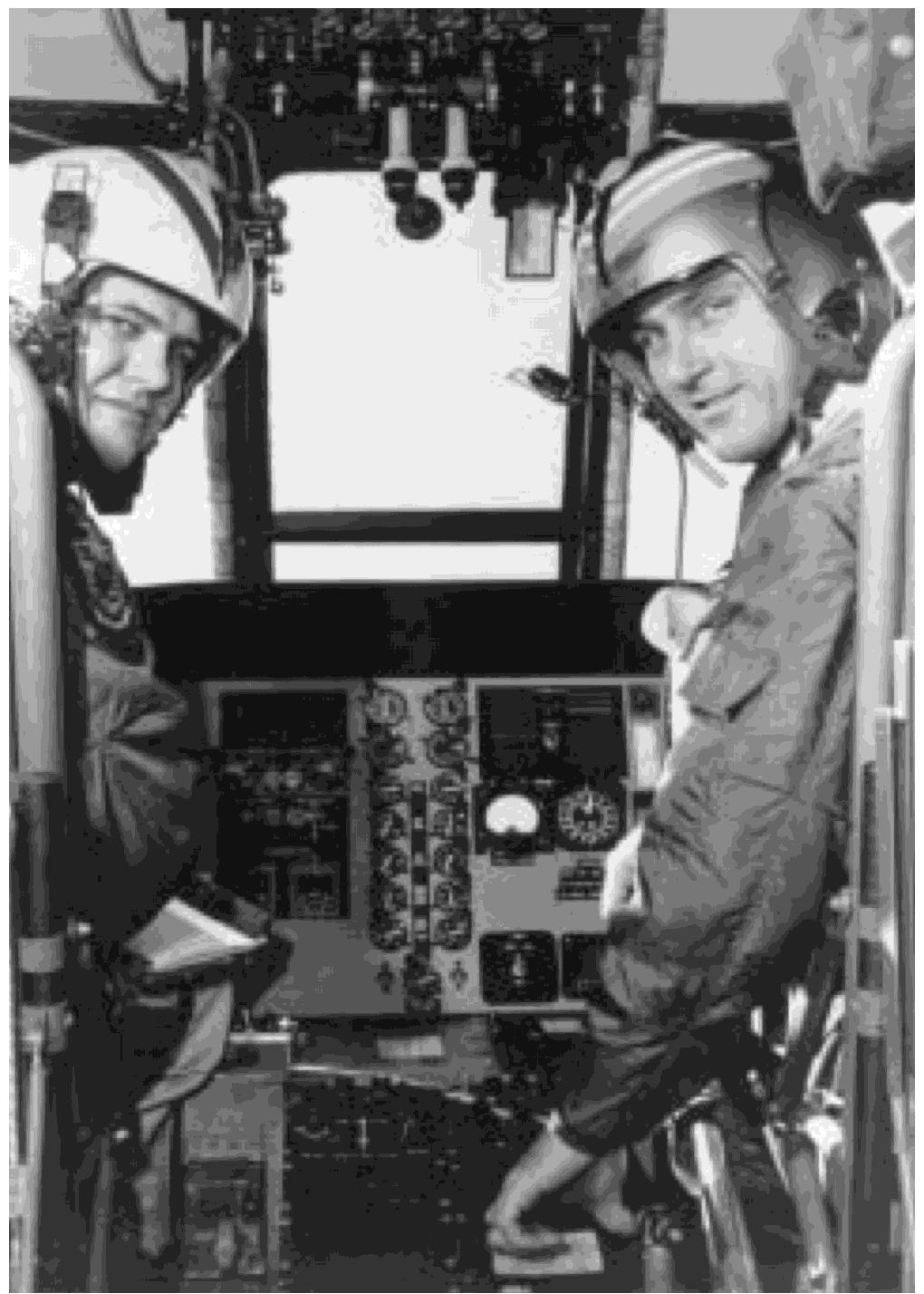
1961-Continued
shooting star superimposed on the traditional aviator
wings of the respective services.
8 December
The landing field at NAS Anacostia,
Washington, D.C., was closed at 0500 hours, all
approach procedures were terminated and air traffic
facilities ceased operation. Thus, ended the career of a
station unique for the variety of its operations and
services, and in terms of continuous operations, the
fourth oldest in the U.S. Navy.
14 December
Installation of the Pilot Landing Aid
Television system (PLAT) was completed on
Coral
Sea,
the first carrier to have the system installed for
operational use. Designed to provide a video tape
of every landing, the system was useful for instruc-
tional purposes and in the analysis of landing acci-
dents making it a valuable tool in the promotion of
safety. By early 1963, all attack carriers had been
equipped with PLAT and plans were underway for
its installation in antisubmarine carriers and at shore
stations.
30 December
An HSS-2 helicopter flown by
Commander Patrick 1. Sullivan and Captain David A.
Spurlock, USMC, at Windsor Locks, Conn., bettered its
old three-kilometer world record at 199.01 mph.
1962
1 January
Three new Fleet Air Commands were
established under Commander, Naval Air Force
Atlantic, one with headquarters at Keflavik, Iceland,
one at Bermuda and the other in the Azores.
17 January
First air operations were conducted by
Enterprise
as Commander George Talley made an
arrested landing and catapult launch in an F8U
Crusader. Although three TF Traders of VR-40 had
taken off from her deck on 30 October 1961 to trans-
port VIPs to the mainland after observing sea trials,
Commander Talley's flights marked the start of
Enterprise
fleet operations.
23 January
The last of 18 F8U-2N Crusaders
VMF(AW)-451, arrived at Atsugi, Japan, from MCAS El
Toro, Calif., completing the first transpacific flight by a
Marine Corps jet fighter squadron. Stops were made at
Kaneohe, Hawaii, Wake Island, and Guam and air
refueling was provided by GV-l tankers. The flight
was led by Lieutenant Colonel Charles E. Crew, com-
manding officer of the squadron.
UNITED STATES NAVAL AVIATION
1910-1995
245
24 January
Two Navy F4H Phantom II fighters, des-
ignated F-ll0A by the Air Force, arrived at Langley
AFB, Va., for use in orientation courses preliminary to
the assignment of Phantom's to units of the Air Force
Tactical Air Command.
26 January
To overcome deficiencies disclosed
during operation of ships equipped with surface-to-
air missiles, the Chief of the Bureau of Naval
Weapons designated an Assistant Chief for Surface
Missile Systems who was to head a special task force
and direct all aspects of surface missiles within the
Bureau and to act with the Chief of Naval Personnel
and the Bureau of Ships on matters involving these
Bureaus.
5 February
An HSS-2 Sea King became the first heli-
copter to exceed 200 mph in an officially sanctioned
trial. Piloted by Lieutenant R. W. Crafton, USN, and
Captain Louis K. Keck, USMC, over a course along the
Connecticut shore from Milford to New Haven, the
antisubmarine helicopter broke the world record for
15 to 25 kilometers with a speed of 210.65 mph.
L. K. Keck and R. W Crafton NH69960
 |
11 |
 |